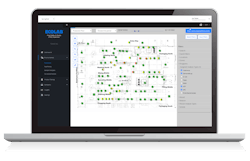Food and beverage processing needs to make the digital shift — here is how to make it happen
A decade ago, food and beverage processing operations were among the early adopters and innovative users of automation. Now, the food and beverage processing world is at the edge of a digital disruption. All that automated technology is creating a big Big Data challenge, and the intensely competitive food and beverage market — amplified by broader macroeconomic uncertainties — puts tremendous pressure on plant leaders to find new efficiencies and drive performance, without compromising quality.
Some forward-thinking food and beverage processors are integrating their automated operations with new digital platforms that radically simplify their growing data recording, data management and reporting requirements around quality assurance and compliance — and deliver actionable insights to drive performance.
Yet many food and beverage processing leaders remain understandably wary of undertaking this kind of digital transformation. They can’t afford a digital debacle that completely disrupts operations and takes forever to deliver value. Fortunately, there are steps they can take to make the shift with minimal disruptions.
Solving the square-peg-round-hole problem
The common concerns around digital platform adoption largely boil down to this: Until recently, none of the digital platforms available to food and beverage processors were designed for food and beverage processing. The conventional options were to take a one-size-fits-all generalist platform and do extensive customization to make it fit food and beverage needs — or to take something like a quality management system built for some other type of much-less-regulated manufacturing operation and try to make it fit food and beverage. It’s the classic square-peg-round-hole problem, and jamming that square peg into the round hole inevitably adds time, cost and headaches.
But the surging demand for digitization in the food and beverage processing world has brought out a new generation of digital platforms that are purpose-built for food and beverage processing, platforms designed by people who understand how food and beverage processing operations work — the unique demands and challenges — and know what matters most to operational, quality assurance and compliance leaders.
A checklist for identifying a purpose-built F&B platform
These next-gen, purpose-built platforms are reshaping what food and beverage leaders can expect from digital platforms — and changing the risk/benefit calculus on when (not if) to digitize. But how can food and beverage leaders navigate the growing range of options for digitization? Here is a short checklist for homing in on a digital platform that’s truly designed for the specific needs of a food and beverage processing operation:
- Deploying without disrupting: Implementing a digital platform should not mean accepting increased downtime or other disruptions to operations. Leading food and beverage data management solutions now offer web-based platforms that allow phased deployment. Plants can strategically roll out components of a platform to minimize or eliminate any disruption to daily operations.
- Shorter time-to-value: With the pace of change accelerating and demands on plant leaders growing, food and beverage processors know they need to make future-proof investments — but they also need those investments to deliver value now. Food and beverage leaders should seek out purpose-built platforms that can deliver out-of-the-box functionality that lets them hit the ground running. Moreover, since every plant will require some customization, purpose-built platforms streamline this phase with built-in customization options and pre-built templates — so there’s no custom coding required to tailor the solution to meet unique workflows and specific QA and compliance requirements. This all adds up to more immediate impact, as food and beverage processors can start seeing measurable value in weeks, rather than years.
- Putting analytics in context: Solving the Big Data problem requires analytics tools that can find the meaningful, actionable signal in the noise of data. That’s a core theme of Industry 5.0: enabling tech to work with and alongside humans, to combine the best of digital processing power with humans’ ability to make nuanced decisions. Analytics plays a huge role in Industry 5.0, but analytics tools are too often limited by the usability (or lack thereof) of their outputs. Analytics tools should not require an in-house data scientist (or team of data scientists) in order to use and make sense of the outputs. Leading purpose-built platforms for food and beverage processing can automatically put data and analytics insights in the context of what it means for the business. This includes analytics-powered dashboards that give users an at-a-glance view of metrics that matter; enabling meaningful benchmarking by plant, by shift, by line and against industry standards; as well as delivering prescriptive insights on what to do next.
- Experts behind the tech: As mentioned, some level of customization and troubleshooting is part of any digital deployment. To be efficient and successful, that support needs to provide both technical expertise and deep industry knowledge. In other words, a tech vendor’s support team needs to understand what matters most to food and beverage processors and know how to tweak the technology to deliver better outcomes. Food and beverage leaders should seek out data management platforms that were designed by people who understand food and beverage processing — and supported by those same people.
- Future-ready agility: Automation, digitization and evolving regulations are changing the food and beverage processing world faster than ever. Food and beverage processors need to ensure that their tech investments are truly future-ready. That not only means the platform should have the technical ability to easily adapt to changes in requirements and workflows, but also that leading platforms should be adapting and evolving one step ahead of those changes.
Vendors behind purpose-built platforms inherently have a vested interest in keeping their technologies up to date with the changing needs and requirements of food and beverage processors. A platform focused on food and beverage processing is also much more likely to incorporate customer requests and suggestions rapidly and successfully into its product innovation roadmap. This future-ready agility increases the lifetime value of a purpose-built solution, while greatly reducing the total cost to owners.
F&B processors can learn from early adopters
Food and beverage processors may not be at the leading edge of the digitization curve, but this affords the opportunity to learn from the mistakes, missteps, frustrations and failures of businesses in other sectors that have already deployed these kinds of platforms. You can now read hundreds of insightful blogs, white papers and reports on how an organization can set itself up for successful digitization. But at the end of the day, the tool or platform itself needs to be fit for the job. Here again, food and beverage processors can learn from their early-adopting peers: Research shows that more than half of companies deploying a new digital platform struggle to make that platform fit their business. What sets the most successful companies apart? Two out of three invested in platforms that were purpose-built for their business sector.
See how leading food and beverage processors are using Ecolab FSQ Supervisor to build a data-driven competitive advantage: https://www.ecolab.com/Food-Bev-Preview
Rick Stokes has worked as a Food Safety/Quality professional for over 25 years in various roles, including developing digital Quality and Food Safety solutions for some of the top Fortune 500 food companies. He currently serves as an Area Technical Support Manager within the Food and Beverage division of Ecolab. He and his team are in charge of updating our world class food safety corporate expectations as needed to reflect the best practices and address emerging issues.
About the Author
Rick Stokes
Rick Stokes has worked as a Food Safety/Quality professional for over 25 years in various roles, including developing digital Quality and Food Safety solutions for some of the top Fortune 500 food companies. He currently serves as an Area Technical Support Manager within the Food and Beverage division of Ecolab. He and his team are in charge of updating our world class food safety corporate expectations as needed to reflect the best practices and address emerging issues.


